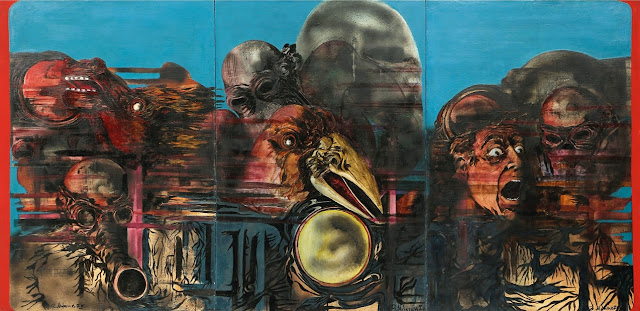Friday, May 29, 2020
01 Painting, Middle East Artists, with Footnotes, #26
Wednesday, May 20, 2020
01 Painting, Middle East Artists, Mahmoud Said's Eid al-Adha, with Footnotes #25
Please visit my other blogs: Art Collector, Mythology, Marine Art, Portrait of a Lady, The Orientalist, Art of the Nude and The Canals of Venice, Middle East Artists, 365 Saints, 365 Days, and Biblical Icons, also visit my Boards on Pinterest
Images are copyright of their respective owners, assignees or others.
Some Images may be subject to copyright
I don't own any of these images - credit is always given when due unless
it is unknown to me. if I post your images without your permission, please tell
me.
I do not sell art, art prints, framed posters or reproductions. Ads are
shown only to compensate the hosting expenses.
If you enjoyed this post, please share with friends and family.
Thank you for visiting my blog and also for liking its posts and pages.
Please note that the content of this post primarily consists of articles
available from Wikipedia or other free sources online.
Saturday, May 16, 2020
01 Painting, Middle East Artists, with Footnotes, #24
Please note that the content of this post primarily consists of articles available from Wikipedia or other free sources online.
Monday, May 11, 2020
01 Painting, Middle East Artists, with Footnotes, #23
Please note that the content of this post primarily consists of articles available from Wikipedia or other free sources online.
Sunday, May 3, 2020
01 Painting, Middle East Artists, BAHMAN MOHASSES' TIRESIAS DIDN'T KNOW MUCH ABOUT THE FUTURE, with Footnotes, #22
He stayed in Iran until 1968, before returning to Rome 1954, where he received commissions for statutes to be placed in Tehran. Some of his public works in Iran were destroyed or damaged after the Islamic Revolution, with the artist subsequently destroying all his remaining works in Iran. He occasionally travelled to Iran and died in self-imposed seclusion in Rome in 2010. More on Bahman Mohassess
Please visit my other blogs: Art Collector, Mythology, Marine Art, Portrait of a Lady, The Orientalist, Art of the Nude and The Canals of Venice, Middle East Artists, 365 Saints, 365 Days, and Biblical Icons, also visit my Boards on Pinterest
Images are copyright of their respective owners, assignees or others.
Some Images may be subject to copyright
I don't own any of these images - credit is always given when due unless
it is unknown to me. if I post your images without your permission, please tell
me.
I do not sell art, art prints, framed posters or reproductions. Ads are
shown only to compensate the hosting expenses.
If you enjoyed this post, please share with friends and family.
Thank you for visiting my blog and also for liking its posts and pages.
Please note that the content of this post primarily consists of articles
available from Wikipedia or other free sources online.




